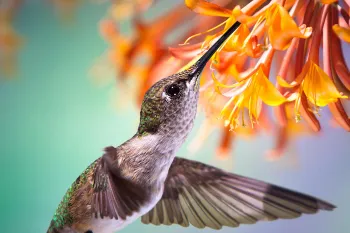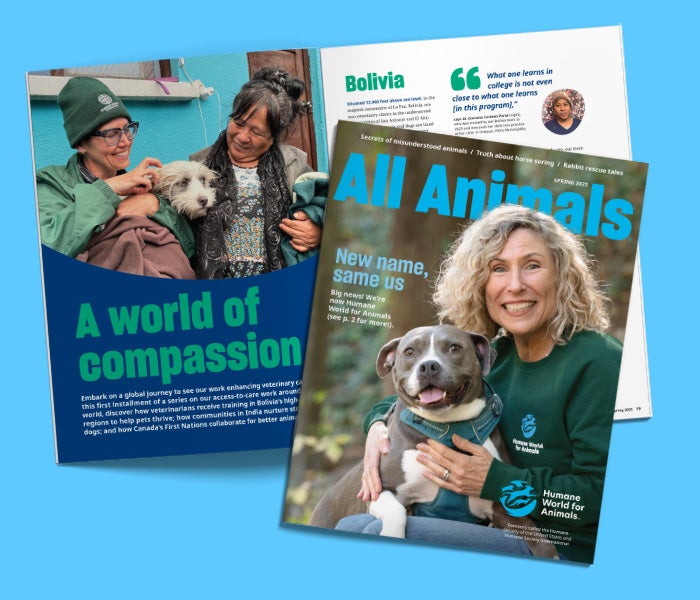Hummingbirds are top contenders for many avian superlatives: Bee hummingbirds are the smallest birds in the world, as diminutive as their insect namesake. In proportion to their body sizes, rufous hummingbirds make one of the longest migrations and Anna’s hummingbirds fly faster than space shuttles re-entering Earth’s atmosphere.
“They’re like the little Chihuahuas of the bird world,” says Christine Barton, director of operations at the Fund for Animals Wildlife Center in Ramona, California, run by HSUS affiliate the Fund for Animals. “They think they’re huge. They think they can take on the world.”
And not without reason: These intelligent acrobats fly backward, hover in mid-air, remember exact locations of food sources, chase away hawks and devour thousands of insects (including mosquitoes) daily.
For all we know about their fast-paced lifestyles, much remains to be discovered. Climate change and habitat loss are likely contributing to their decline, but research is scant. And the nagging question for wildlife lovers—do feeders help or harm hummingbirds?—has few clear answers. But we do know this: Killing them with kindness (or good intentions) is all too common, due to contaminated feeders, inappropriate ingredients such as honey or brown sugar, and mistaken beliefs that hummingbirds in distress can be nursed back to health on sugar water alone.
Sugar water can go stale, but flowers regularly replenish nectar, and native species attract protein-rich insects.
To casual observers, their eagerness at feeders obscures a critical dietary need: insects and spiders. Feeders in landscapes with fewer insects are akin to fast-food drive-thrus doling out 32-ounce sodas and nothing else—a quick hit of energy but little substance.
Before adding artificial food sources, consider creating habitat instead, advises veterinarian Lisa Tell, director of the UC Davis Hummingbird Health and Conservation Program. “Have you first tried things like planting natural food sources that, by their nature, are already probably healthier for the birds?” she asks. Sugar water can go stale, but flowers regularly replenish nectar, and native species attract protein-rich insects. Feeders where birds congregate can harbor pathogens, but plants aren’t likely to be disease hotbeds.
Meredith Lee/Humane World for Animals
Create a haven for wildlife
A humane backyard is a natural habitat offering wildlife plenty of food, water and cover, plus a safe place to live free from pesticides, chemicals, free-roaming pets, inhumane practices and other threats. And it's so easy to build!
In her garden, Barton traded feeders for plants to reduce territorial behaviors. Now the birds dine more peacefully among salvias, penstemons, monkeyflowers and other native species. And they’re also doing plants a favor; about 7,000 species from Alaska to Patagonia rely on hummingbirds for pollination. In one Costa Rica study, feeders drew hummingbirds away from their flower-visiting activities, which could hurt wildlife dependent on plants for berries, seeds and nesting sites.
What does all this mean for hummingbird lovers? As with many wildlife issues, we must navigate between the world as it is and the world as it should be. If you already offer sugar water, “the last thing we want people to do is run out and take their feeders down,” says Tell, especially in environmentally degraded areas where hummingbirds are habituated. To do the most good and the least harm, offer plants, avoid pesticides and follow these tips for feeders: Mix one part white table sugar to four parts water. Place feeders far from windows to prevent bird strikes. Clean weekly and more often in warm weather. A good guideline, says Tell: “If you wouldn’t drink it, then it’s not great to offer to them.”

